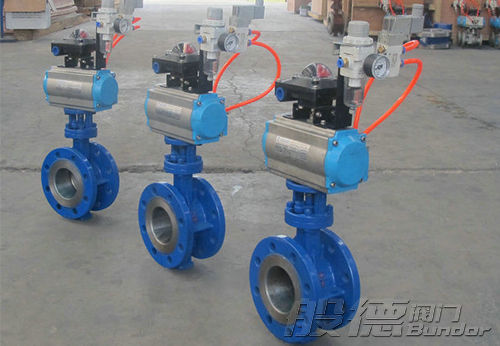Bundor valve: The difference between double-acting pneumatic butterfly valve and single-acting pneumatic butterfly valve is that the operation principle of the two is different.

The working principle of double-acting pneumatic butterfly valve:
The double-acting butterfly valve has two air chambers on the left and right. The air source signal pressure output by the double-acting positioner of the pneumatic butterfly valve is respectively input into the left and right air chambers of the actuator piston. Due to the different pressures of the air source input to the air chambers on both sides, a pressure difference will be formed between the two air chambers, thereby pushing the piston to move in a straight line. Through gear and rack transmission, the linear motion of the piston is converted into the rotational motion of the main shaft of the actuator. When the pressures of the left and right air chambers are balanced, the motion stops. If it is necessary to adjust the flow, it is necessary to drive the valve stem and valve core to rotate while the actuator rotates, so as to change the flow area between the valve core and the valve seat to achieve the purpose of adjustment.
The working principle of single-acting pneumatic butterfly valve:
The air signal pressure output by the single-acting positioner of the single-acting butterfly valve is input into the air chamber on the non-spring side of the pneumatic actuator. Because the air signal pressure on the piston acts on the difference between the thrust and the spring force, the cylinder will The piston will move in a straight line. Through the gear and rack drive, the thrust formed by the gas signal pressure is balanced with the spring force, and the movement stops.
In addition, when the main shaft of the actuator rotates, the valve stem and the valve core are driven to rotate, thereby changing the flow area between the valve core and the valve seat to achieve the purpose of adjustment.













